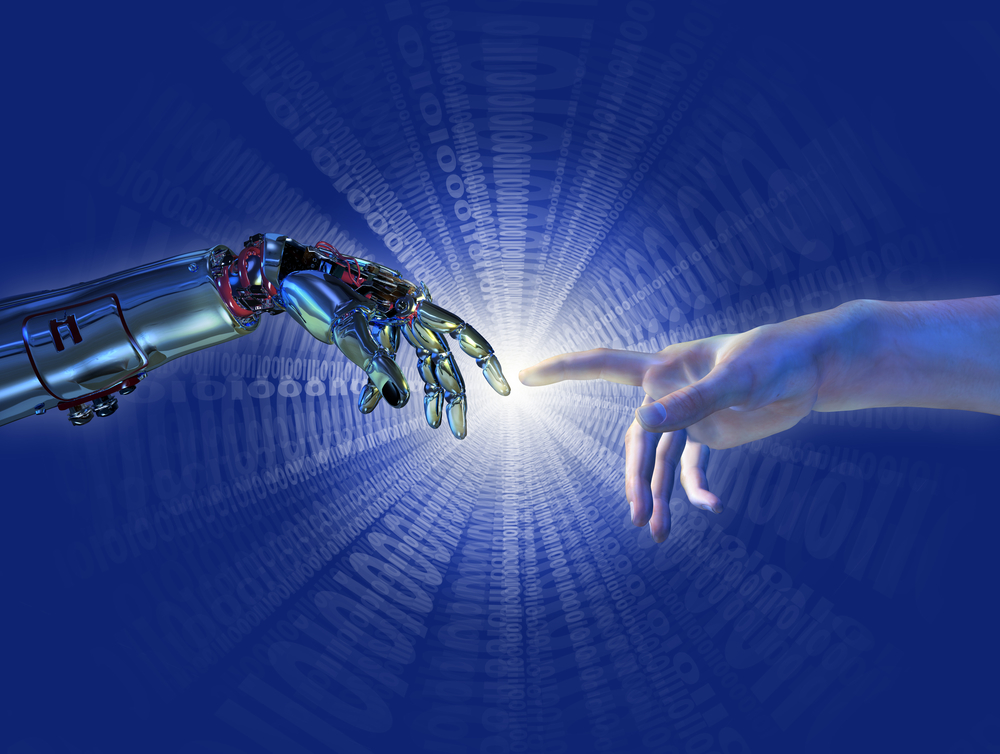Your competitive edge: How AI/human cooperation empowers market research

In 2019, global private investment in AI technology reached $70 Billion, representing a massive buy-in from start-ups and big corporations alike. From self-driving cars to advanced medical diagnosis, the potential for AI to shift the very foundations of our lifestyles is growing.
And yet, 65 percent of companies have not seen business gains from their AI investments. That potential, it seems, is being stymied. But why?
It’s important to remember that many of AI’s most promising innovations are still on the horizon, albeit nearer now than they ever were before. We may not have a fully-autonomous fleet of cars on our roads and highways, but we do have cars that can park themselves, or keep within the lanes while driving.
In the same way, AI-backed automotive technology requires a human behind the wheel, so too do future-focused companies need a collaboration between AI’s insights and human ingenuity, particularly when it comes to market research.
What AI Can (And Cannot) Do
Tech alarmists often talk about AI in warning tones, pointing to headlines like '200,000 banking jobs could be lost to artificial intelligence' as evidence of AI’s potential for negative change.
These surface-level analyses of our tech-driven future overlook a key reality: AI will create 58 million more jobs than it displaces. Within the banking industry, low-skilled roles like currency exchange will be increasingly handled by machines, while tasks closer to a bank’s bottom line - fraud detection, portfolio management, and anything customer service related -- will be augmented by AI as new roles are created.
This is the key to effective AI implementation: learning where machines can save time and resources by replacing outdated processes while giving employees the oversight to do their jobs more effectively, using technology.
What these roles look like within industries varies depending on the goals of a company. In market research, this means providing industry experts with the data-driven insights provided by AI & ML algorithms. Without cooperation, AI can only provide figures, while human experts are left to speculate on market trends. AI and human collaboration creates new strategies that push a business ahead of its lagging competitors.
With all that in mind, it’s time to consider the most important factor in AI/Human collaboration: How to best implement technology into existing practices.
The AI Advantage
The applications are extensive across industries. Commonly cited examples include fraud detection, customer service via chatbots, personalized advertising, and of course consumer forecasting and market reports.
With so much potential, should companies thus strive to bring AI solutions into every branch of their business? Not necessarily. It’s up to the employees in charge of these departments to decide where, when, and how to implement AI, based on both the data they have access to and the expectations of the market.
Take the pharmaceutical industry, for example. Johnson & Johnson, with total revenue of $82 billion in 2019, has a strong incentive to bring cutting-edge AI into its business practices in order to increase revenue and stay ahead of the competition. In 2015, the company began marketing its Sedasys machine, which could provide basic anesthesiology at a tenth of the current cost. The upshot? In less than a year, Johnson & Johnson had pulled the plug on the project, citing low sales.
What happened with Sedasys was a failure to bring humans - doctors, nurses, and administrators - into the process of implementing the AI technology in their workflows. For market research, this lesson clearly shows that each AI integration should always bring value, with humans getting comprehensive guidance on how to work with the technology to its best potential, rather than to compete with it.
Your Employees, Your Innovation
Bringing employees into the digital transformation process isn’t merely a matter of making them ‘feel better’ about the changes. When companies ignore the intuition of their employees, focusing solely on what the data and algorithms can bring them, they’re sacrificing the value of their hires. In short, they’re overlooking value already created within the company by hiring the right people.
The collaboration between AI and humans will be the differentiator between companies stuck in outdated methods and those looking ahead to a more competitive future. By combining these two essential practices, virtually all industries have a greater opportunity to thrive - provided they give their employees the leeway to use the technology in a way that works with them.
Looking ahead throughout the 2020s, market research will become more refined, based on the data markets create, processed by AI-backed algorithms. This approach, however, suffers without the guidance of industry experts who know where to separate the signal from the noise. It’s only when the tools are put in the right hands that you begin to see the key advantage over your competitors.
Image credit: AlienCat/depositphotos.com
 Sudip Saha, the 'Mozart of Market Research', a moniker given to him by his peers, is the COO of Future Market Insights. In his current role, he is responsible for the strategic and tactical leadership of the COO functions, supporting and monitoring the strategy, planning, execution, financial position, and market performance of FMI. Armed with a solid understanding of the nuances of market research, Sudip has successfully steered FMI to become one of the leading companies in the research and consulting landscape.
Sudip Saha, the 'Mozart of Market Research', a moniker given to him by his peers, is the COO of Future Market Insights. In his current role, he is responsible for the strategic and tactical leadership of the COO functions, supporting and monitoring the strategy, planning, execution, financial position, and market performance of FMI. Armed with a solid understanding of the nuances of market research, Sudip has successfully steered FMI to become one of the leading companies in the research and consulting landscape.
